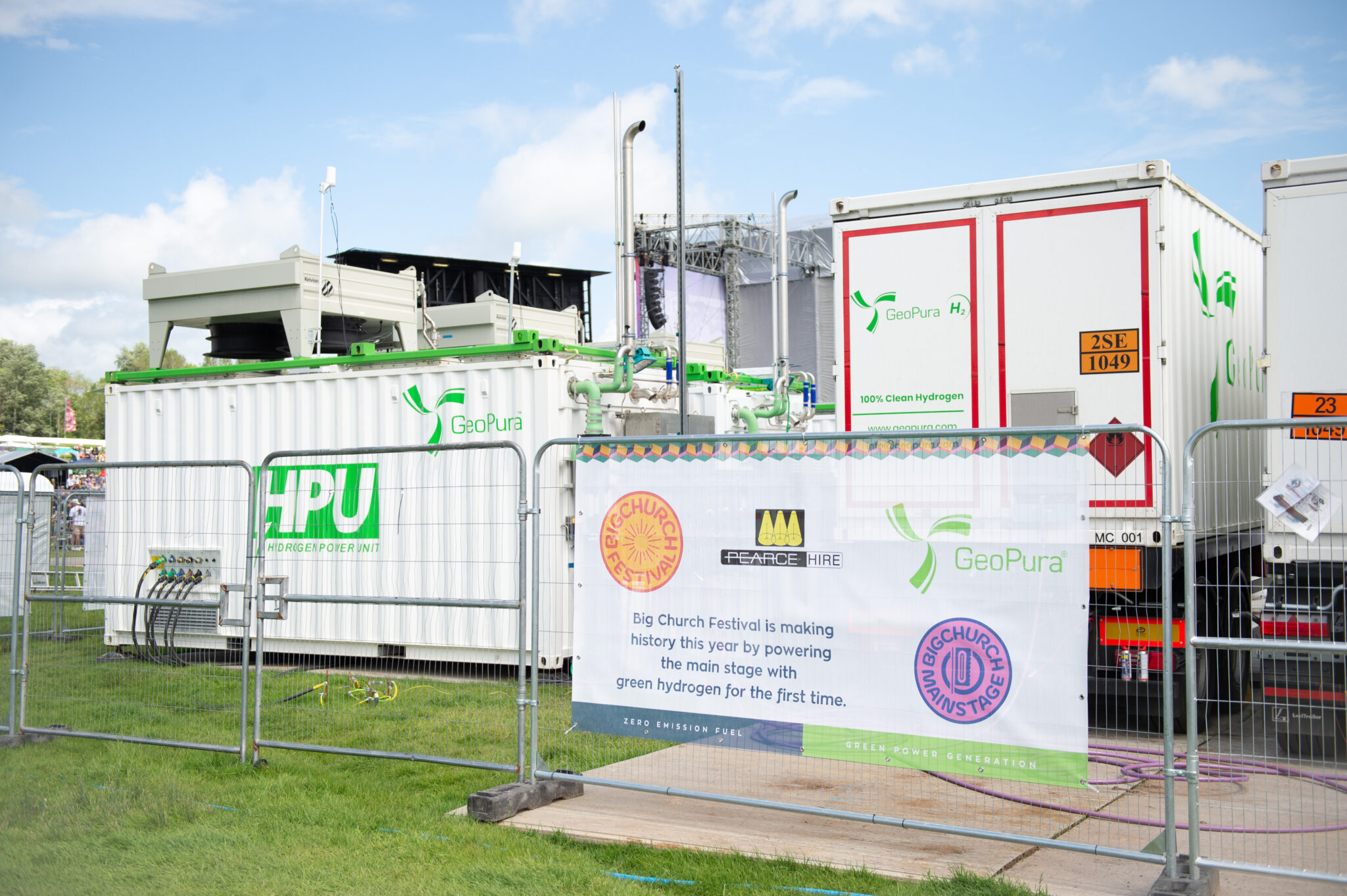
Rocking Out CO2: Green Hydrogen Steals the Spotlight
June 12, 2024The Rising Impact of Outdoor Music Festivals
Outdoor music festivals have become a cultural phenomenon, drawing massive crowds and growing at a staggering rate. By 2024, user penetration for these events is expected to reach 4.4%, with annual revenue growth projected at 14%. While these gatherings offer unforgettable experiences, they also come with significant environmental costs, primarily driven by the extensive use of diesel generators.
The Diesel Dilemma
Generators at music festivals, often running at low capacities, still consume substantial amounts of diesel fuel. Large events use about 0.13 gallons of diesel per person per day, while smaller festivals use around 0.07 gallons. For instance, Summerfest in Milwaukee, with 800,000 attendees, consumes approximately 105,669 gallons of diesel daily. Similarly, Coachella’s 600,000 attendees require 79,252 gallons, and even smaller events like Newport Folk Festival, with 50,000 attendees, use 6,604 gallons of diesel each day.
Carbon Footprint Conversion
The reliance on diesel fuel results in significant CO2 emissions. According to the U.S. Energy Information Administration, burning one gallon of diesel emits 10.19 kg of CO2. This translates to:
- Summerfest: 1,077 metric tons of CO2 per day
- Coachella: 808 metric tons of CO2 per day
- Newport Folk Festival: 67 metric tons of CO2 per day
To put this into perspective, Summerfest’s daily emissions are equivalent to the annual electricity consumption of 210 U.S. homes. Coachella’s emissions correspond to the carbon sequestered by 956 acres of U.S. forests for one year, and the Newport Folk Festival’s emissions are comparable to the yearly CO2 output of 14 cars.
Enter Green Hydrogen
Green hydrogen presents a revolutionary solution to this environmental challenge. Unlike diesel, which emits harmful pollutants, green hydrogen produces only water as a byproduct when used in fuel cells or generators. The European Green Festival Roadmap, a collaborative effort by industry bodies like A Greener Future and the European Festival Association (Yourope), emphasizes reducing fossil fuel reliance within the festival industry.
Case Studies in Green Hydrogen Adoption
Several notable festivals are leading the way in this green revolution:
- Big Church Festival in the UK made history by powering its main stage with green hydrogen, cutting approximately 5.8 tons of CO2 compared to previous years.
- Glastonbury Festival in the UK has incorporated green hydrogen technology in a pilot project, supported by the government, to power stages and support infrastructure.
- Roskilde Festival in Denmark, in partnership with Ørsted, utilizes wind energy and explores green hydrogen as a diesel alternative.
- Southside and Hurricane Festivals in Germany have tested hydrogen fuel cells for temporary power supply, marking a shift towards cleaner energy.

GeoPura Green Hydrogen Generators at Big ChurchFestival
The Future of Green Energy in Festivals
Taking the recent Big Church Festival in Europe, the continent’s largest Christian and gospel music event, made history this year by powering its main stage with green hydrogen for the first time. Transitioning to green hydrogen not only mitigates climate change but also reduces air pollution and noise, enhancing the overall experience for attendees and local communities.
To further improve its carbon footprint, event power supplier Pearce Hire partnered with GeoPura to power the main stage and surrounding services entirely with hydrogen, leading to a significant CO2 reduction of about 5.8 tons. GeoPura’s hydrogen-powered generators provided reliable, large-scale power without the harmful emissions of traditional diesel generators.
“Diesel generators have long been a staple in event power generation, but their environmental impact cannot be ignored,” remarked Steve Hicks, Project Manager at Pearce Hire. “By adopting GeoPura’s green hydrogen technology, we’re not only transitioning to delivering reliable electricity more sustainably but also providing unforgettable experiences for attendees.”
Designed for critical applications like live events, where reliability is paramount, the HPU can operate off-grid or synchronize with the grid to manage peak demands and boost availability. Its versatile design also allows it to provide heating, hot water, and fast EV charging, enhancing the sustainability of events with zero-emissions power.
Conclusion
 Green hydrogen presents an opportunity for the festival industry to significantly mitigate climate change impacts, reduce air pollution, and decrease noise, thereby enhancing the overall experience for attendees and local communities. By collaborating with forward-thinking suppliers like GeoPura and Pearce Hire, and adopting green hydrogen technology, festivals can deliver reliable, large-scale power with zero harmful emissions. This proactive approach not only aligns with industry best practices but also champions a more sustainable future for events worldwide.
Green hydrogen presents an opportunity for the festival industry to significantly mitigate climate change impacts, reduce air pollution, and decrease noise, thereby enhancing the overall experience for attendees and local communities. By collaborating with forward-thinking suppliers like GeoPura and Pearce Hire, and adopting green hydrogen technology, festivals can deliver reliable, large-scale power with zero harmful emissions. This proactive approach not only aligns with industry best practices but also champions a more sustainable future for events worldwide.



 With over 15 years of reporting hydrogen news, we are your premier source for the latest updates and insights in hydrogen and renewable energy.
With over 15 years of reporting hydrogen news, we are your premier source for the latest updates and insights in hydrogen and renewable energy.